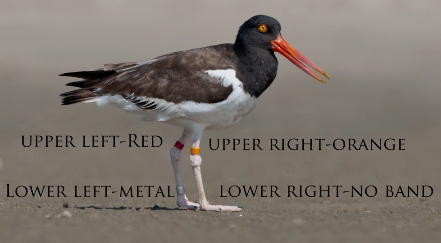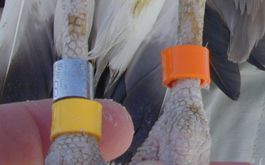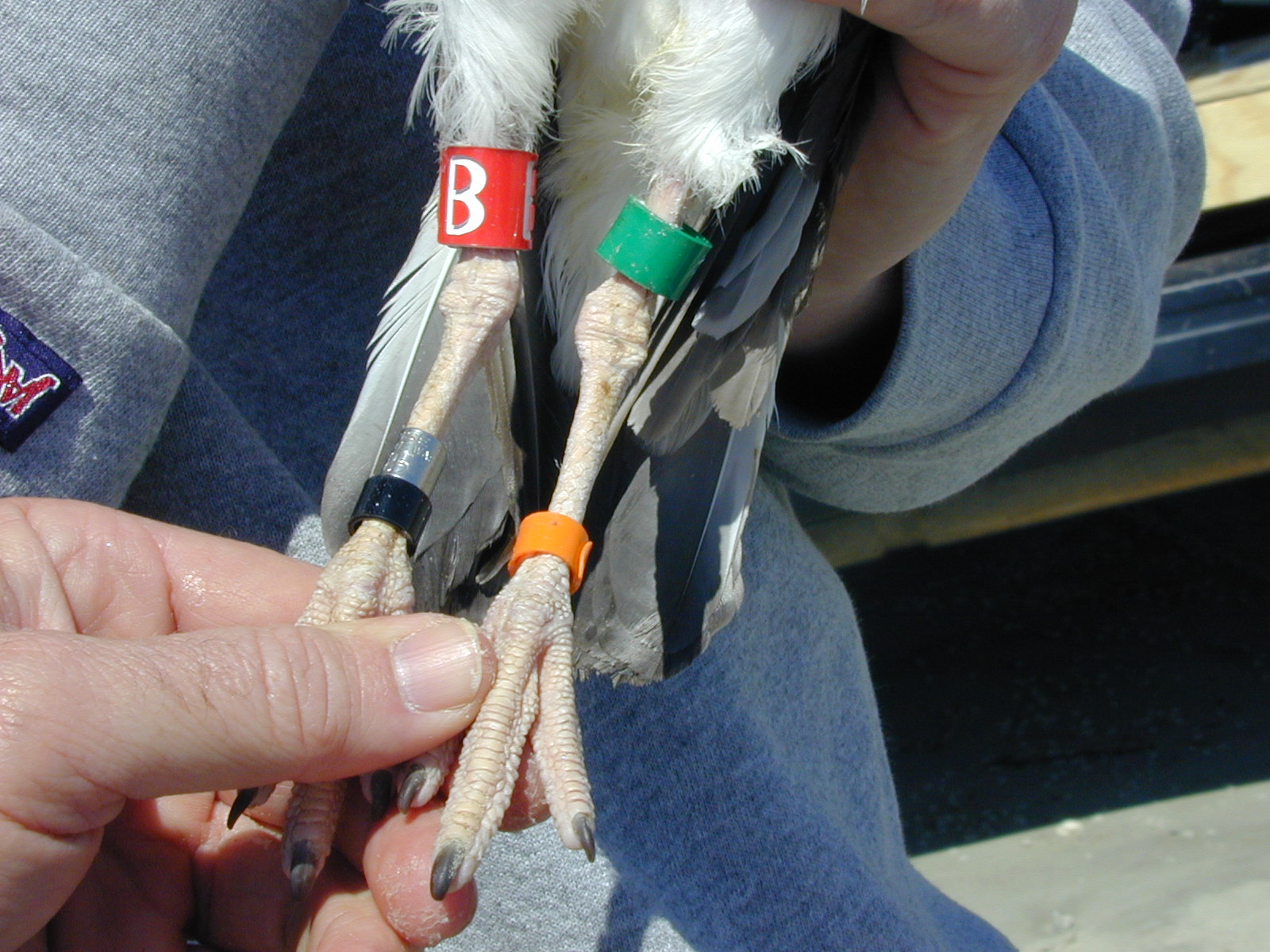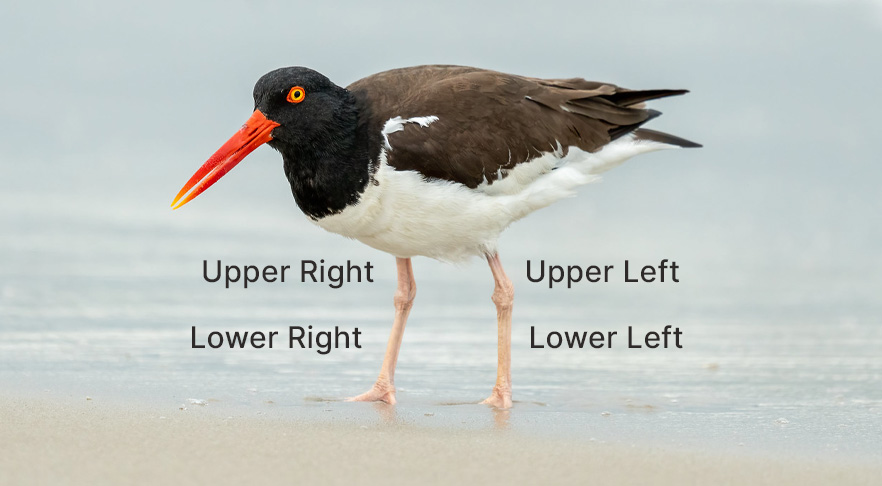Identifying Banded Birds
Bands may look like a flash of color or a bump on the leg of an oystercatcher. If you think you see something on an oystercatcher’s legs, you could be looking at a banded bird. If you have binoculars, a camera with a zoom lens, or a spotting scope–and can approach without causing the birds to flush–try to read the band code.
The location of bands on the bird’s legs, the color of the bands, and the type of bands are all important to accurately confirm the identity of the individual bird. Different locations, colors, and types of bands–along with the codes engraved on the bands–combine to make each bird’s band combination unique. This page will address how to determine the position, type, and color of oystercatcher bands. The next page addresses reading band codes.
Location of Bands
Bands can be placed on any of four locations on the legs of American Oystercatchers: upper left, lower left, upper right, and lower right.

When determining band position, note the location on the bird’s left and right, not yours. If you could not see one of the four positions on the bird’s legs, do not assume there was no band. Birds may stand on one leg, stand in water, or fluff their belly feathers, all of which can hide bands. Report an unseen location as “unknown.”

Occasionally, two bands will be in the same location, one above the other. In the photo below, the orange band is by itself, but there are two bands in the same location on the opposite leg. This would be read top to bottom, so that location would have “metal/yellow” bands. This type of banding is no longer in use for oystercatchers, so it’s no longer usual to see it on them.
Type of Bands
Oystercatcher bands vary by the material they are made out of and their shape. Though most oystercatchers will have only plastic field readable bands and a metal band, it’s good to know what else you might find while birdwatching.
Materials: Metal bands and plastic bands
Almost every banded bird receives a metal band. These bands are most commonly placed on the lower legs of oystercatchers and will be smaller than other bands. They carry a unique eight- or nine-digit number, but they are not intended to be read except when the bird is recaptured or found dead. Do not worry about reading the numbers on the metal band, but note its location when possible.
Almost every banded oystercatcher is given a plastic field readable band. The plastic is made to be especially durable, so the oystercatchers carry them for their entire lives–some over 20 years. The purpose of these bands is to be “field readable,” which means that they are engraved with a two- or three-character code (letters, numbers, or a combination of both) that is legible when the free, wild oystercatcher is viewed with a spotting scope or photographed with a telephoto lens. Sometimes, it’s even possible to read a field readable code with binoculars. When combined with the band color, the field readable code uniquely identifies the oystercatcher.
Early oystercatcher banding schemes included some “plain” plastic bands too. These are not field readable, meaning they do not have any codes engraved on them. As of the early 2020s some are still being resighted on oystercatchers, but they are the exception and not the rule. These bands will be small, about the size of metal bands, and less conspicuous than field readable bands.
The photo below shows an early oystercatcher banding scheme. Though it hasn’t been in use since the early 2000s, it illustrates all three of the bands described in this section: a plastic field readable band (on the bird’s upper right leg), plain plastic bands (the green and orange bands on the bird’s left leg and the black band on the lower right leg), and a metal band (the silvery band on the lower right leg).

Shapes: Round bands and flags
Most plastic bands are simple round bracelets, but some have a tab that sticks out from the ring around the bird’s leg. These are called “flags.” Most flags have engraved codes on them, but some do not. Some oystercatchers have both round and flag bands as in the picture below.

Color of Bands
As part of the Working Group’s standardized banding protocol, groups of states have been assigned different colors for their plastic field readable bands. For example, all oystercatchers banded in North Carolina receive dark green field readable bands.
You can see the different colors used in the “Banding Schemes” gallery, or look under Research Sites to see what banding schemes each state is using.

An example of faded orange bands.
Some band colors can be easy to confuse. For example, in some light conditions, dark blue and black can be nearly identical. In addition, the colors maroon and red are almost the same; however, maroon bands have only been used in Texas and Louisiana, and it is unlikely that maroon bands will appear on the Atlantic coast. Sometimes it may be hard to see the metal band, which blends in with the birds’ light-colored legs. Finally, some early orange bands faded and now look are the color of cantaloupe (see photo) and can be mistaken for yellow bands. Photographs are often helpful in clearing up questions about band color.
Put It All Together
When you observe a banded oystercatcher, you should now be able to determine what location the bands are on the bird’s legs and what type and color they are. This is made easier by the standardized banding scheme. You can next focus on reading the code on the bands, which is discussed on the Reading Band Codes page.


